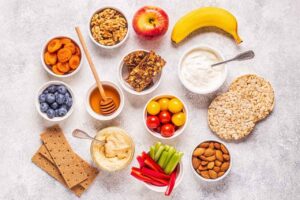Controlling diabetes is mainly about making the right food choices, and an important aspect of this is knowing how to read food labels. Reading the labels helps in getting the necessary details that, in turn, helps in controlling blood sugars, preventing intake of excess hidden sugars and monitoring other nutrients.
Once you have mastered how to interpret these labels, you stand a chance to manage your diet effectively and adopt practices that suit your diabetes care. We shall attempt to dissect food labels, look at their components, and explore how they help manage diabetes in real life.
What Are The Basic Of Food Labelling?
Food labels reveal great aspects of food contained in them, yet not all are present easily for instant use. This is important because it shows what should be sought and how to use the information in the management of diabetes.
Key Components of Food Labels
Nutritional Facts Panel:
This provides an analysis of single serving size nutrients present in the product Such as calories, fats, carbohydrates, proteins, vitamins, and minerals. Though these sections are quite important in the understanding of how to manage diabetes, the most critical ones are carbohydrates, sugars, and fibre as these contribute to raised sugar levels in the blood.
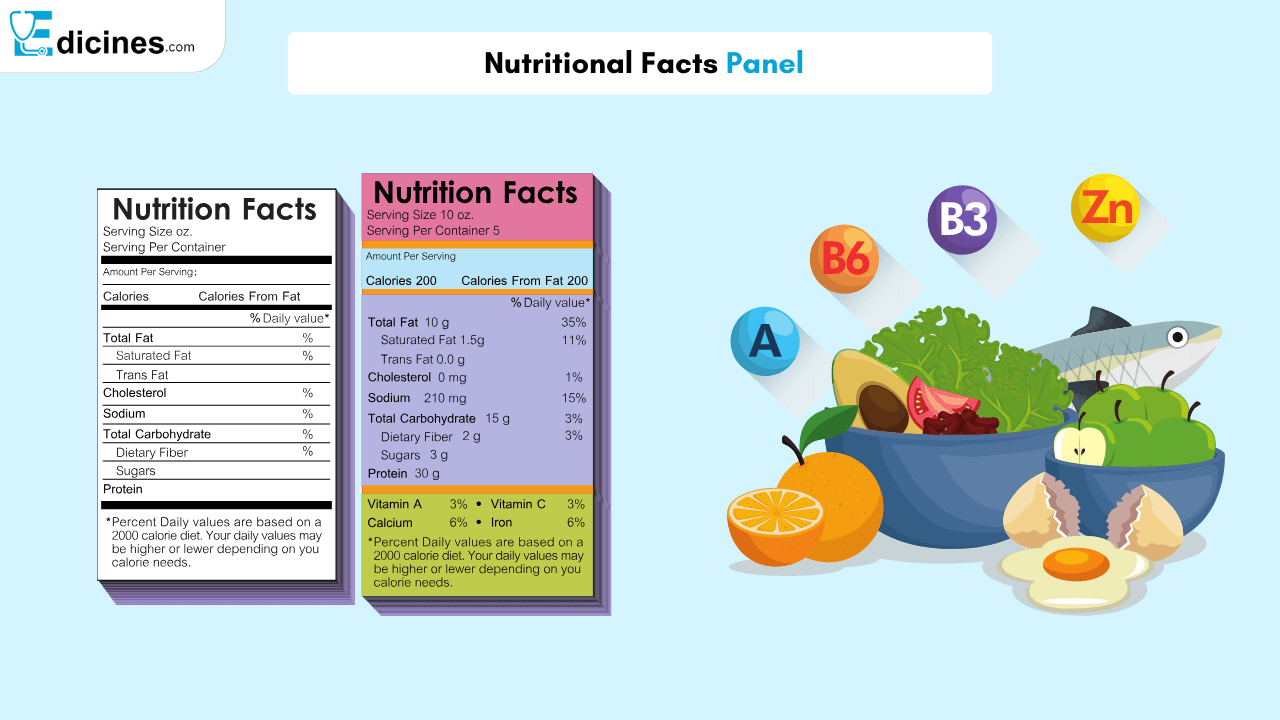
Ingredients List:
Being able to comprehend this list will assist you in spotting added sugars, bad oils, and preservatives, which could be harmful to your blood sugar. For example, if sugar or syrup happens to be among the top ingredients, there is a high possibility that the item will have a lot of extra sugars.
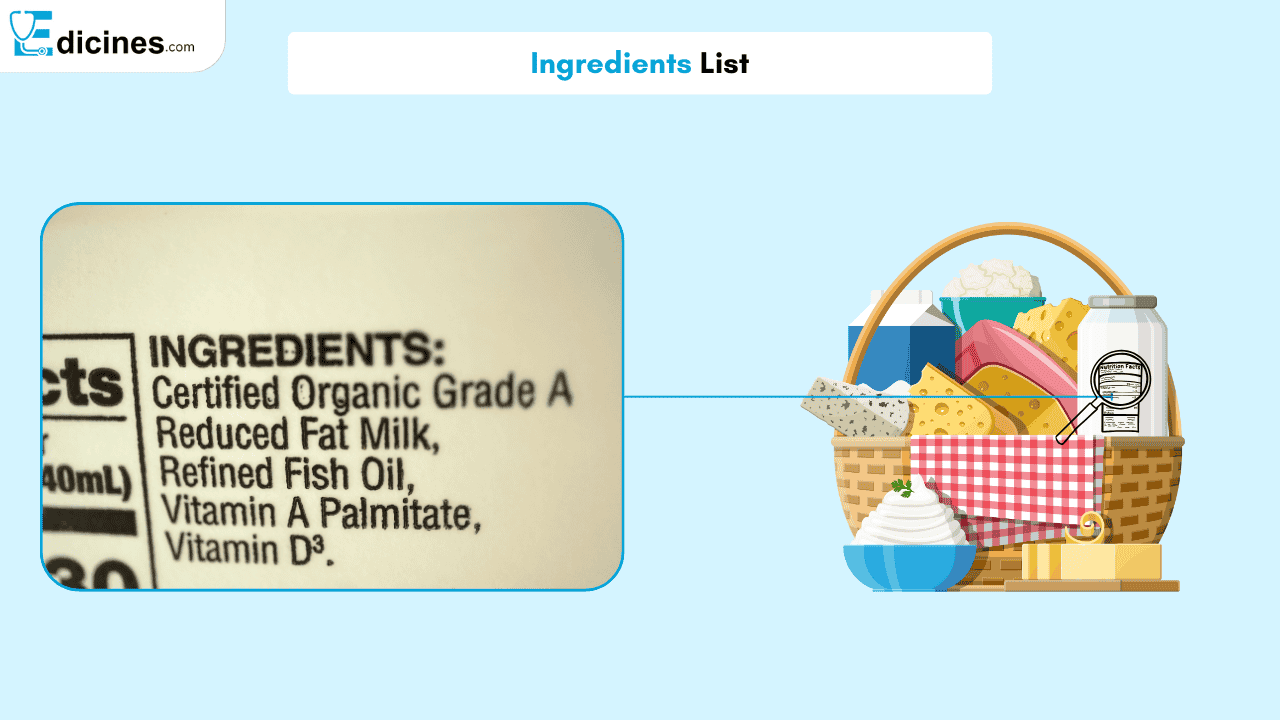
Read Food Labels (Carbohydrate Content)
Carbohydrates are the major nutrient contributing to the sugar level in blood. That is why you should learn to read the carbohydrate information on a label if you want to take full control on your diabetes.
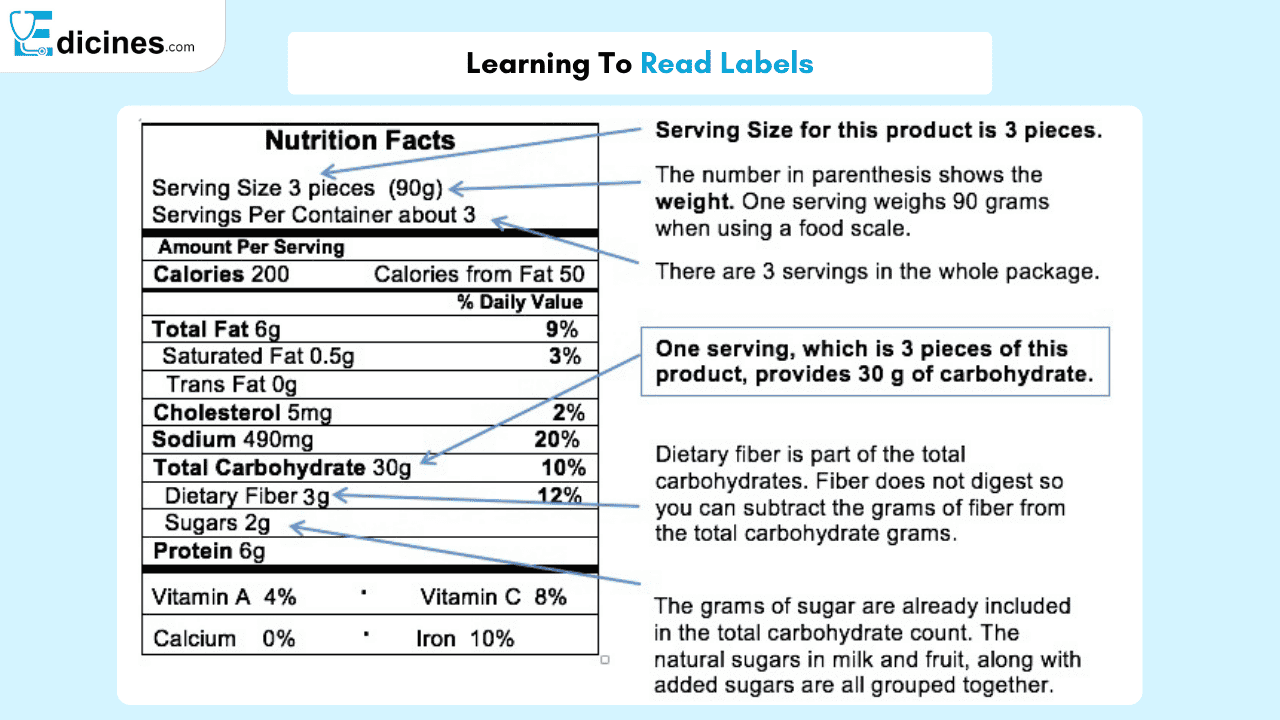
Total Carbohydrates
It represents the entire amount of carbohydrates that are contained in the food, whether they be sugars, fibers or starches. However, it is of utmost importance in the management of diabetes, as it shows blood glucose occupancy by food. Also forget the calories in and calorie out mindset as this will not work in diabetic patients.
Fibre
Fibre is a type of carbohydrate that the body cannot digest. Foods with high fibre content may also help decrease the speed of sugar absorption hence reducing high blood glucose levels. Foods high in fibre are better for maintaining healthy blood sugar levels.
Sugars
This part encompasses both kinds of sugars, consisting of both added sugar and sugars that are inherent in the food. Naturally occurring sugars, for example, that found in fruits or milk, are preferable to refined sugars or added sugars present in most processed foods. Many of those suffering from diabetes should, therefore, restrict themselves with added sugars.
Also Read: Top Herbal Supplements for Diabetes Management
Identifying and Avoiding Hidden Sugars
It can be challenging for people with diabetes to identify hidden sugars in foods, especially processed ones. Even medications can sometimes contain added sugars in various forms, making it difficult to track your overall intake.
Different Types of Sugars
Sugar can be found in many forms, including high-fructose corn syrup, natural sugars, molasses, and dextrose. When checking food labels, it’s essential to be aware of these terms to avoid consuming excessive amounts of sugar. Even products marketed as healthy may contain significant amounts of hidden sugars.
Sugar Alcohols
Some products labeled as “sugar-free” may contain sugar alcohols like xylitol, sorbitol, or erythritol. While these sweeteners have less impact on blood sugar than regular sugar, they can still affect glucose levels, especially in large quantities. It’s important to consume sugar alcohols in moderation to avoid unexpected blood sugar fluctuations.
Understanding Fat Content and Its Impact
Although fat does not directly raise or lower blood glucose it is an important aspect of health in general. Fats are very crucial to diet especially for diabetic patients since they have high chances of suffering from heart diseases.
Types of Fats
Not all fats are created equal. Food labels often categorize fats into saturated (raised cholesterol), unsaturated (lowered cholesterol), and trans fats.
For people with diabetes, foods rich in unsaturated fats, like avocados and olive oil, are generally considered healthier options. However, animal fats (saturated) and industrially produced trans fats should be consumed in moderation due to their potential contribution to cardiovascular disease.
Daily Fat Intake
Also food labels present the amount of your daily recommended fat that a particular serving contributes, and this is important. Bearing in mind your fat consumption may aid in safeguarding your heart health as well as general health especially where diabetes is concerned.
How to Evaluate Protein Levels
Protein is considered one of the three macronutrients and its availability remains paramount to a diabetic patient. It has the ability to cause satisfaction after meals, promotes muscular structures in the body and has been linked to changes in blood glucose levels.
Role of Protein
Consumption of appropriate levels of protein may have an effect in curbing appetite and bringing about balance of sugars in the blood by mitigating the rate of carbohydrates digestion.
Protein That a Person Needs Each Day
So when you look at most food and nutrition labels, they give you the total amount of protein per serving size, in addition make sure this amount meets your daily intake. High protein sources like cooked chicken, eggs and beans are also suitable for diabetic patients.
Understanding Serving Sizes
Competently knowing how much food is to be eaten is one of the most fundamental factors of helping in diabetes control. Serving sizes indicated on food packages do not always equate to what you are actually consuming.
Benefit and Drawback of Serving Sizes in Managing Diabetes
Serving size and portion
Portion size is the amount of food you actually eat, while serving size is the recommended amount listed on food labels. If you consume more than the recommended serving, you’ll need to adjust your nutritional calculations to account for the increased blood sugar impact.
Putting in Place Serving Size Alterations
For example, if a serving of a food contains 20 grams of carbohydrates, consuming two servings would result in a total intake of 40 grams. To meet your nutritional goals, it’s important to adjust your serving sizes accordingly.
Tips for Effective Label Reading
After understanding foods labels, this information must also be utilized in real life, day-to-day practice. Below listed are some practical suggestions offered to assist one in making the right food choices:
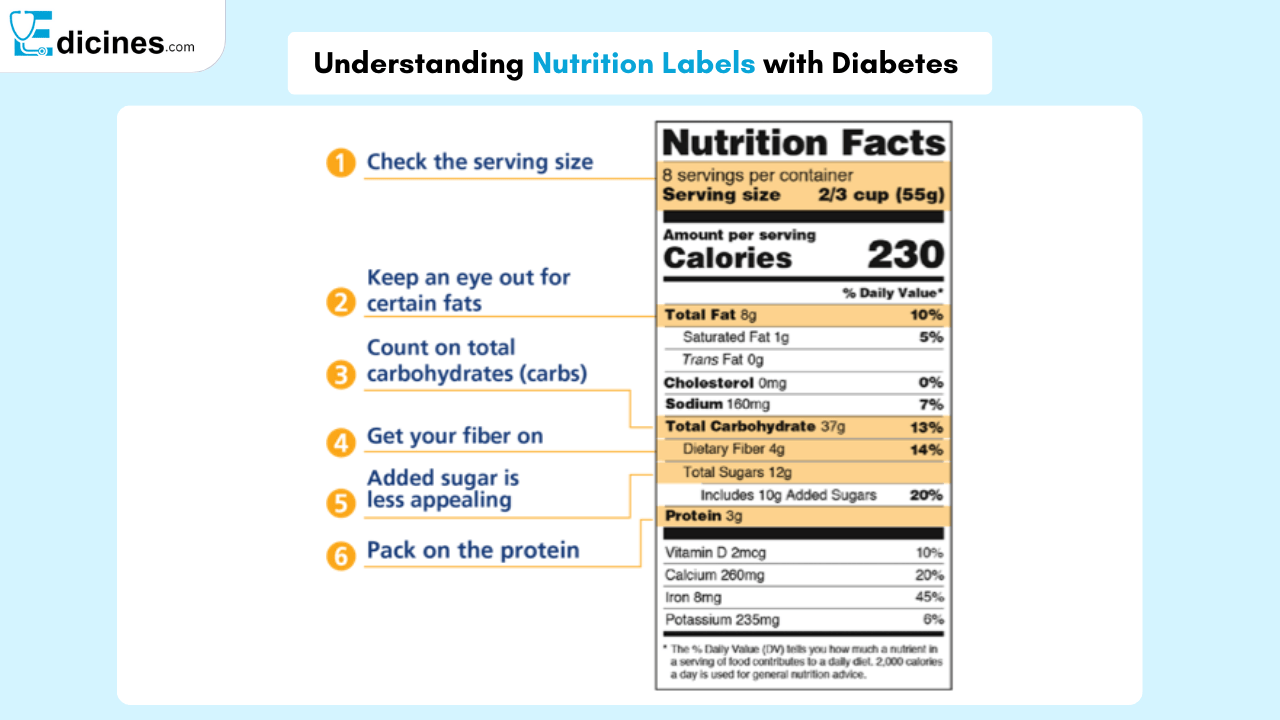
Plan Ahead
Prior to going to the market, prepare a timetable for meals and snacks. Once in the market, read the different product labels and select the ones most compatible with your diet.
Keep a Food Diary
Keeping a record of what you eat, when you eat and measure your blood glucose could help you see and make dietary changes. Gradually, this helps in better choices and retraining oneself from foods that aggravate glucose levels.
Use Apps and Tools
There are now many smartphone applications that allow you to take a photo of a food label and receive the nutritional breakdown of that food. These tools work especially well when in a supermarket shopping and one needs to be mindful of his/her diet, in helping make quick choices.
Conclusion
Knowing how to read a food label properly is perhaps one of the best weapons against diabetes. This is because controlling the carbohydrates, dietary fibre, sugars, fats and proteins helps one choose better foods for blood sugar control. In time, you will feel comfortable in reading food labels and deciding what to eat.
As such, for effective diabetes management, learn to read labels while shopping from this moment. After all, it is essential to seek the counseling from your physician regarding your specific dietary requirements.








